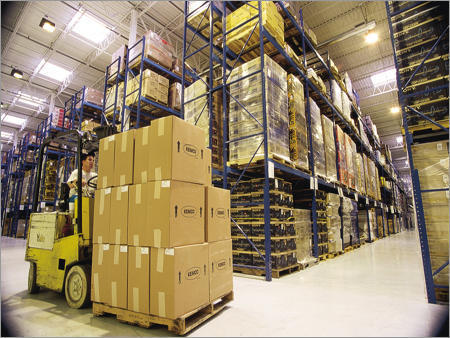
The Dynamics of Warehousing Services in India
Introduction:
In recent years, India has witnessed a paradigm shift in its logistics and supply chain management, with warehousing services playing a pivotal role in this transformation. As the Indian economy continues to grow, fueled by advancements in e-commerce, manufacturing, and trade, the demand for efficient and scalable warehousing solutions has soared. This article delves into the landscape of Warehousing Services in India, exploring key trends, challenges, and the role these services play in the broader context of supply chain optimization.
The Evolving Landscape:
The warehousing sector in India has evolved significantly, driven by factors such as increasing consumer expectations, the rise of e-commerce giants, and government initiatives like the Goods and Services Tax (GST). The implementation of GST has played a crucial role in streamlining the supply chain by replacing the complex tax structure with a unified system, making warehousing more efficient and cost-effective.
One of the defining features of the warehousing sector in India is the diversification of services. Traditional warehousing, which primarily involved storing goods, has given way to integrated solutions that encompass inventory management, order fulfillment, and distribution. Companies are now investing in state-of-the-art technology and automation to enhance the efficiency of their warehousing operations.
Strategic Locations and Infrastructure:
The geographical spread of warehouses across India has become a critical factor in ensuring timely and cost-effective delivery. Major cities and emerging industrial hubs are witnessing a surge in the development of modern warehouses equipped with advanced technology, such as RFID (Radio-Frequency Identification), IoT (Internet of Things), and automated storage and retrieval systems.
Strategic location decisions are influenced by factors like proximity to transportation hubs, market demand, and access to a skilled workforce. Warehouses located near major ports and transportation networks are particularly valuable, facilitating seamless import/export processes and reducing transit times.
Technology Integration:
The integration of technology has been a game-changer in the warehousing sector. Warehouse Management Systems (WMS), RFID, and IoT devices are being employed to monitor and manage inventory in real-time. These technologies not only enhance efficiency but also contribute to data-driven decision-making.
Automation, including robotics and artificial intelligence, is another frontier being explored by warehousing service providers. Automated picking and packing systems, coupled with autonomous guided vehicles, are reducing manual errors and increasing the speed of order fulfillment. While the initial investment in these technologies can be significant, the long-term benefits in terms of accuracy and efficiency are substantial.
Challenges and Solutions:
Despite the remarkable progress, the warehousing sector in India faces its share of challenges. Infrastructure bottlenecks, ranging from poor road connectivity to limited cold storage facilities, can hinder the seamless flow of goods. Additionally, a shortage of skilled manpower proficient in handling advanced technologies poses a challenge for companies looking to adopt automation.
To address these challenges, there is a growing emphasis on public-private partnerships and collaborations. The government's focus on infrastructure development, especially through initiatives like the Bharatmala Project, aims to improve connectivity and reduce transit times. Training programs and collaborations with educational institutions are being initiated to bridge the skill gap in the workforce.
Environmental Sustainability:
As the world grapples with environmental concerns, warehousing services in India are also embracing sustainable practices. Green warehouses, equipped with energy-efficient systems, rainwater harvesting, and solar panels, are becoming more prevalent. Companies are increasingly adopting eco-friendly packaging materials and optimizing transportation routes to reduce their carbon footprint.
Conclusion:
The Warehousing Services in India is undergoing a transformative phase, driven by technological advancements, strategic location decisions, and a commitment to sustainability. As e-commerce continues to thrive and supply chains become more complex, the role of warehousing in ensuring seamless operations and customer satisfaction cannot be overstated.
Companies that invest in modern, technology-driven warehousing solutions stand to gain a competitive edge in the evolving business landscape. With ongoing efforts to address challenges and foster innovation, the warehousing sector is poised to play a pivotal role in shaping the future of logistics and supply chain management in India.